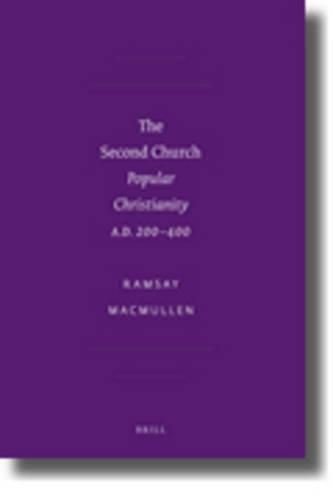Readings Newsletter
Become a Readings Member to make your shopping experience even easier.
Sign in or sign up for free!
You’re not far away from qualifying for FREE standard shipping within Australia
You’ve qualified for FREE standard shipping within Australia
The cart is loading…






Christianity in the century both before and after Constantine’s conversion is familiar thanks to the written sources; now Ramsay MacMullen, in his fifth book on ancient Christianity, considers especially the unwritten evidence. He uses excavation reports about hundreds of churches of the fourth century to show what worshipers did in them and in the cemeteries where most of them were built. What emerges, in this richly illustrated work, is a religion that ordinary Christians, by far the majority, practiced in a different and largely forgotten second church. The picture fits with textual evidence that has been often misunderstood or little noticed. The first church-the familiar one governed by bishops-in part condemned, in part tolerated, and in part re-shaped the church of the many. Even together, however, the two constituted by the end of the period studied (AD 400) a total of the population far smaller than has ever been suggested. Better estimates are now made for the first time from quantifiable data, that is, from the physical space available for attendance in places of worship. Reassessment raises very large questions about the place of religion in the life of the times and in the social composition of both churches.
$9.00 standard shipping within Australia
FREE standard shipping within Australia for orders over $100.00
Express & International shipping calculated at checkout
Christianity in the century both before and after Constantine’s conversion is familiar thanks to the written sources; now Ramsay MacMullen, in his fifth book on ancient Christianity, considers especially the unwritten evidence. He uses excavation reports about hundreds of churches of the fourth century to show what worshipers did in them and in the cemeteries where most of them were built. What emerges, in this richly illustrated work, is a religion that ordinary Christians, by far the majority, practiced in a different and largely forgotten second church. The picture fits with textual evidence that has been often misunderstood or little noticed. The first church-the familiar one governed by bishops-in part condemned, in part tolerated, and in part re-shaped the church of the many. Even together, however, the two constituted by the end of the period studied (AD 400) a total of the population far smaller than has ever been suggested. Better estimates are now made for the first time from quantifiable data, that is, from the physical space available for attendance in places of worship. Reassessment raises very large questions about the place of religion in the life of the times and in the social composition of both churches.